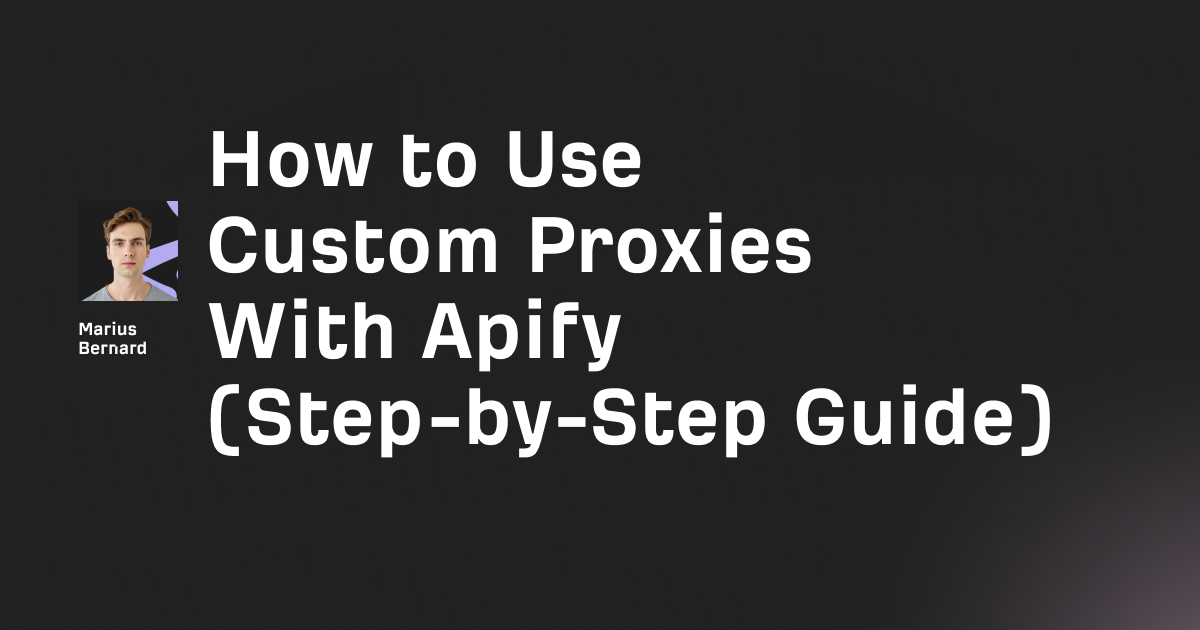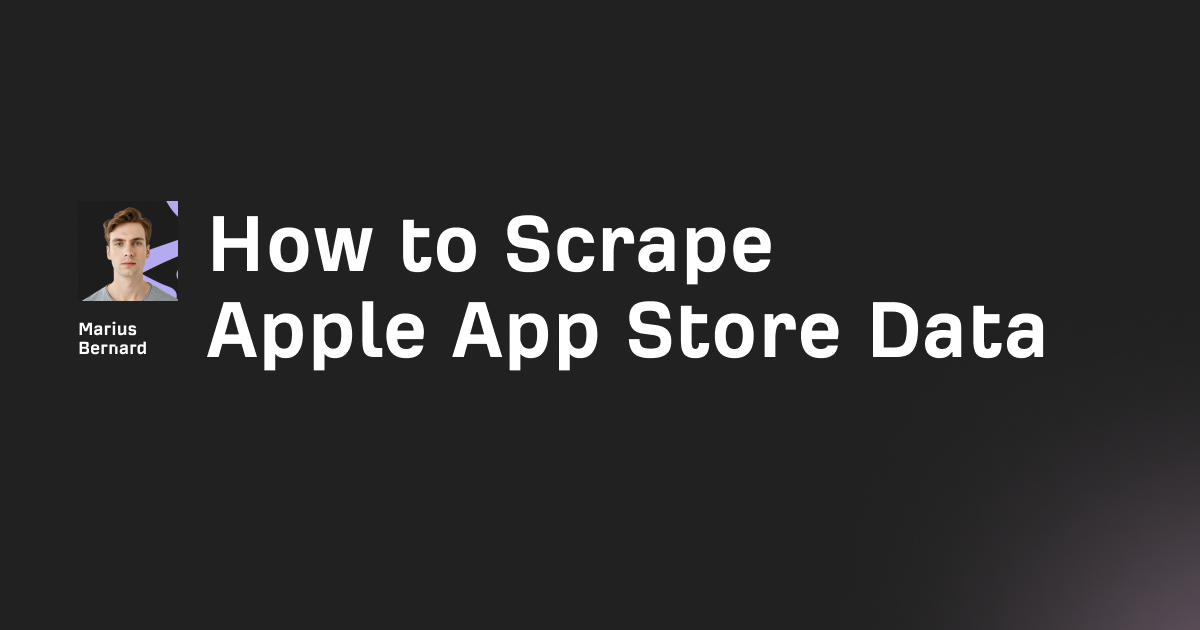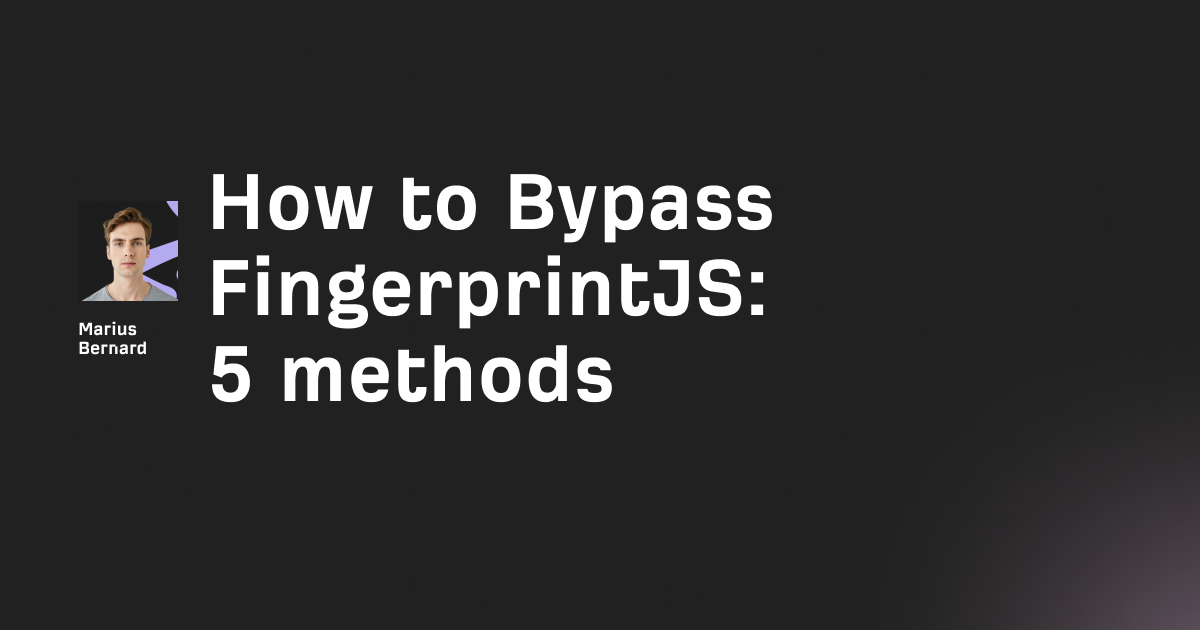Grok AI brings intelligence to web scraping by understanding content context instead of relying on brittle CSS selectors.
Unlike traditional scrapers that break when websites change their layout, Grok can extract data using natural language instructions and adapt to structural changes.
In this guide, we’ll build a production-ready scraper that combines Python’s requests library with Grok’s reasoning capabilities for efficient data extraction. We’ll keep things practical, show you the code, and highlight cost-saving tactics so you can scale with confidence.
Why Traditional Web Scraping Breaks (And Why You Need This)
Here’s the problem: you spend hours writing the perfect BeautifulSoup scraper, meticulously mapping out selectors like div.product-card > span.price-value. It works great. Then the site redesigns their layout and your scraper returns empty arrays.
I’ve been there. After watching scrapers fail during a critical data collection run (right before a deadline, naturally), I realized the fragility wasn’t a bug—it was a feature of how we approach scraping.
The solution? Let AI do the pattern recognition instead of hardcoding it. Grok’s language models can interpret HTML structure and extract data based on semantic meaning rather than fixed selectors. When a site changes class="price" to class="product-price", Grok still understands you want the price.
Here’s what you’ll learn:
- Setting up Grok API for web scraping
- Lightweight scraping with requests + Grok (no browser overhead)
- Handling dynamic content when necessary (Playwright)
- Structured data extraction with schema validation (Pydantic)
- Cost optimization strategies and a scalable batch pipeline
Prerequisites
Before we start, make sure you have:
- Python 3.10+
- A Grok API key from x.ai
- Basic understanding of HTTP requests
- ~$5 in API credits (Grok charges ~$3 per million input tokens; prices can change)
Step 1: Configure Grok API and Test Connection
The Grok API is compatible with the OpenAI SDK, making migration straightforward. We’ll use the OpenAI client library but point it to Grok’s endpoints.
First, install dependencies:
pip install openai requests beautifulsoup4 python-dotenv lxml
Create a .env file to store your API key securely:
XAI_API_KEY=your_grok_api_key_here
Now set up the client and verify the connection:
import os
from dotenv import load_dotenv
from openai import OpenAI
load_dotenv()
client = OpenAI(
api_key=os.getenv("XAI_API_KEY"),
base_url="https://api.x.ai/v1"
)
This initialization creates an OpenAI-compatible client but routes all requests to Grok’s API via base_url.
Sanity-check the connection:
def test_grok_connection():
response = client.chat.completions.create(
model="grok-3-mini",
messages=[
{"role": "user", "content": "Respond with 'connected' if you can read this"}
]
)
return response.choices[0].message.content
print(test_grok_connection())
If you see “connected” (or a friendly variation), you’re ready to scrape. We’re using grok-3-mini here because it’s cost-effective and more than sufficient for data extraction tasks.
Step 2: Build a Lightweight Scraper with requests
Most scraping guides jump straight to Selenium or Puppeteer. That’s overkill for ~80% of scraping tasks. Static HTML can be scraped efficiently with the requests library, which has lower overhead than headless browsers.
Fetch raw HTML:
import requests
from bs4 import BeautifulSoup
def fetch_page(url):
headers = {
'User-Agent': 'Mozilla/5.0 (Windows NT 10.0; Win64; x64) AppleWebKit/537.36'
}
response = requests.get(url, headers=headers, timeout=10)
response.raise_for_status()
return response.text
The User-Agent header makes your request look like it’s coming from a real browser. Many sites block the default python-requests user agent.
Now comes the interesting part. Instead of writing CSS selectors, we’ll ask Grok to extract structured data using natural language:
def extract_with_grok(html_content, extraction_goal):
prompt = f"""Extract data from this HTML based on the following goal: {extraction_goal}
HTML:
{html_content[:8000]}
Return ONLY valid JSON with the extracted data. If you cannot find the data, return an empty object."""
response = client.chat.completions.create(
model="grok-3-mini",
messages=[
{"role": "system", "content": "You are a data extraction specialist. Return only valid JSON."},
{"role": "user", "content": prompt}
],
temperature=0.1
)
return response.choices[0].message.content
Note the [:8000] slice—this prevents token overrun. Most product pages have key info early in the HTML. temperature=0.1 reduces randomness for consistent outputs.
Use it like this:
url = "https://example.com/product-page"
html = fetch_page(url)
goal = "Extract product name, price, availability status, and main features as a list"
extracted_data = extract_with_grok(html, goal)
print(extracted_data)
Expected output (clean JSON):
{
"product_name": "Wireless Mouse XZ-2000",
"price": "$29.99",
"availability": "In Stock",
"features": [
"2.4GHz wireless connection",
"Ergonomic design",
"18-month battery life"
]
}
Why this is resilient: when the site changes structure, you don’t need to update selectors. Grok adapts because it understands semantics (“price,” “availability,” “features”), not just tags and classes.
Step 3: Handle Dynamic Content When Necessary
Some sites load content via JavaScript. When requests returns empty product listings, you need a headless browser. Don’t reach for Selenium by default—Playwright is lightweight and fast.
Install the tools:
pip install playwright
playwright install chromium
Create a function that handles JS-rendered pages:
from playwright.sync_api import sync_playwright
def fetch_dynamic_page(url):
with sync_playwright() as p:
browser = p.chromium.launch(headless=True)
page = browser.new_page()
page.goto(url, wait_until="networkidle")
content = page.content()
browser.close()
return content
wait_until="networkidle" waits for the page to finish loading (no in-flight requests for ~500ms), which helps ensure you capture the populated DOM.
Smart decision logic: try the fast path first, then fall back.
def smart_fetch(url):
try:
html = fetch_page(url)
soup = BeautifulSoup(html, 'lxml')
if len(soup.get_text(strip=True)) < 200:
print("Minimal content detected, using browser...")
return fetch_dynamic_page(url)
return html
except requests.exceptions.RequestException as e:
print(f"Request failed: {e}, falling back to browser")
return fetch_dynamic_page(url)
This saves serious time: requests completes in ~200ms; Playwright often takes a few seconds per page.
Step 4: Structured Extraction with Pydantic Schemas
Here’s where things get powerful. Grok supports structured outputs that can be validated against a JSON Schema. Combine that with Pydantic to guarantee types and shape.
Define your data model:
from pydantic import BaseModel, Field
from typing import List, Optional
class Product(BaseModel):
name: str = Field(description="Product name")
price: float = Field(description="Price in USD")
currency: str = Field(default="USD")
in_stock: bool = Field(description="Availability status")
rating: Optional[float] = Field(None, description="Star rating out of 5")
features: List[str] = Field(default_factory=list)
Now request a response that matches your schema:
import json
def structured_extract(html_content, schema_model):
schema = schema_model.model_json_schema()
prompt = f"""Extract product information from this HTML.
HTML:
{html_content[:10000]}
Return data that matches the schema exactly."""
response = client.chat.completions.create(
model="grok-3-mini",
messages=[
{"role": "system", "content": "Extract structured product data."},
{"role": "user", "content": prompt}
],
response_format={
"type": "json_schema",
"json_schema": {
"name": "product_extraction",
"schema": schema,
"strict": True
}
},
temperature=0
)
data = json.loads(response.choices[0].message.content)
return schema_model(**data)
With strict: True, the response must match your schema—or you’ll get an error you can handle. No more "29.99" strings when you expected float.
Usage:
url = "https://example.com/product/wireless-mouse"
html = smart_fetch(url)
product = structured_extract(html, Product)
print(f"Name: {product.name}")
print(f"Price: ${product.price}")
print(f"In stock: {product.in_stock}")
print(f"Features: {', '.join(product.features)}")
Step 5: Batch Processing and Cost Optimization
When scraping at scale, API costs and throughput matter. Here are three techniques to keep Grok fast and frugal.
Technique 1: Batch HTML Preprocessing
Send only the relevant section of the page:
from bs4 import BeautifulSoup
def extract_relevant_html(full_html, container_selector):
soup = BeautifulSoup(full_html, 'lxml')
container = soup.select_one(container_selector)
if not container:
return full_html[:12000]
return str(container)[:12000]
Aim to pass the product detail container (e.g., .product-details). Expect a 60–80% token reduction.
Technique 2: Cache Grok’s Understanding
Have Grok learn selectors once, then use BeautifulSoup for speed:
def learn_page_structure(sample_html):
prompt = f"""Analyze this HTML and create CSS selectors for: product name, price, availability.
HTML:
{sample_html[:6000]}
Return a JSON mapping of field names to CSS selectors."""
response = client.chat.completions.create(
model="grok-3-mini",
messages=[{"role": "user", "content": prompt}],
temperature=0
)
return json.loads(response.choices[0].message.content)
# Run once on a representative page
# selectors = {'name': '.product-title', 'price': 'span[data-price]', ...}
Use the hybrid approach:
def hybrid_extract(html, selectors):
soup = BeautifulSoup(html, 'lxml')
data = {}
for field, selector in selectors.items():
el = soup.select_one(selector)
if el:
data[field] = el.get_text(strip=True)
if len(data) < len(selectors) * 0.5:
return extract_with_grok(html, "Extract product data")
return json.dumps(data)
Technique 3: Parallel Processing with Rate Limits
Scrape concurrently without triggering anti-bot rules:
import asyncio
from typing import List
async def scrape_multiple_urls(urls: List[str], max_concurrent=5):
semaphore = asyncio.Semaphore(max_concurrent)
async def scrape_with_limit(url):
async with semaphore:
html = await asyncio.to_thread(smart_fetch, url)
await asyncio.sleep(0.5) # polite pacing
return await asyncio.to_thread(
extract_with_grok, html, "Extract product info"
)
tasks = [scrape_with_limit(url) for url in urls]
return await asyncio.gather(*tasks, return_exceptions=True)
# Usage
# results = asyncio.run(scrape_multiple_urls(urls))
Rough cost math (example):
- Input: ~2,000 tokens/page (preprocessed HTML)
- Output: ~200 tokens/extraction
- Total: ~2,200 tokens/product
- At $3 / 1M tokens: ~$0.0066 per product
- 10,000 products: ~$66 (plus egress/infra)
Handling Anti-Bot Protection
Modern anti-bot systems use behavioral analysis, device fingerprinting, and JS challenges. Start simple; escalate only if needed.
Add realistic headers and timing:
import random
import time
import requests
def human_like_fetch(url):
time.sleep(random.uniform(2, 5))
user_agents = [
'Mozilla/5.0 (Windows NT 10.0; Win64; x64) AppleWebKit/537.36',
'Mozilla/5.0 (Macintosh; Intel Mac OS X 10_15_7) AppleWebKit/537.36',
'Mozilla/5.0 (X11; Linux x86_64) AppleWebKit/537.36'
]
headers = {
'User-Agent': random.choice(user_agents),
'Accept': 'text/html,application/xhtml+xml,application/xml;q=0.9',
'Accept-Language': 'en-US,en;q=0.9',
'Accept-Encoding': 'gzip, deflate, br',
'DNT': '1',
'Connection': 'keep-alive',
'Upgrade-Insecure-Requests': '1'
}
response = requests.get(url, headers=headers, timeout=15)
response.raise_for_status()
return response.text
For tougher sites, use Playwright with small stealth tweaks:
from playwright.sync_api import sync_playwright
def stealth_fetch(url):
with sync_playwright() as p:
browser = p.chromium.launch(
headless=True,
args=['--disable-blink-features=AutomationControlled']
)
context = browser.new_context(
viewport={'width': 1920, 'height': 1080},
user_agent='Mozilla/5.0 (Windows NT 10.0; Win64; x64) AppleWebKit/537.36'
)
page = context.new_page()
page.goto(url, wait_until="networkidle")
page.mouse.move(100, 100) # optional human-like behavior
page.mouse.move(200, 200)
content = page.content()
browser.close()
return content
Note: Always check a site’s Terms of Service and robots.txt, and comply with applicable laws and data policies.
Complete Example: Scraping a Product Catalog
Here’s everything combined into a production-ready pipeline.
import os
import json
import asyncio
from typing import List
from dotenv import load_dotenv
from openai import OpenAI
from pydantic import BaseModel, Field
import requests
from bs4 import BeautifulSoup
load_dotenv()
client = OpenAI(
api_key=os.getenv("XAI_API_KEY"),
base_url="https://api.x.ai/v1"
)
class Product(BaseModel):
name: str
price: float
in_stock: bool
features: List[str] = Field(default_factory=list)
def fetch_page(url: str) -> str:
headers = {'User-Agent': 'Mozilla/5.0 (Windows NT 10.0; Win64; x64)'}
response = requests.get(url, headers=headers, timeout=10)
response.raise_for_status()
return response.text
def extract_product(html: str) -> Product:
soup = BeautifulSoup(html, 'lxml')
relevant_html = str(soup)[:10000]
schema = Product.model_json_schema()
response = client.chat.completions.create(
model="grok-3-mini",
messages=[
{"role": "system", "content": "Extract product data as JSON."},
{"role": "user", "content": f"HTML: {relevant_html}"}
],
response_format={
"type": "json_schema",
"json_schema": {"schema": schema, "strict": True}
},
temperature=0
)
data = json.loads(response.choices[0].message.content)
return Product(**data)
async def scrape_catalog(urls: List[str]) -> List[Product]:
products = []
for url in urls:
try:
html = await asyncio.to_thread(fetch_page, url)
product = await asyncio.to_thread(extract_product, html)
products.append(product)
await asyncio.sleep(1) # rate limit politely
except Exception as e:
print(f"Error scraping {url}: {e}")
continue
return products
# Example usage
# urls = ["https://example.com/products/item1", "https://example.com/products/item2"]
# products = asyncio.run(scrape_catalog(urls))
# for p in products:
# print(f"{p.name}: ${p.price} - {'Available' if p.in_stock else 'Out of Stock'}")
This scraper:
- Uses requests for speed, Grok for comprehension
- Validates with Pydantic
- Scales via asyncio
- Respects rate limits
- Produces typed objects you can save to a DB or export to CSV/JSON
Debugging Tips
When extraction fails, inspect exactly what Grok is seeing and returning:
def debug_extraction(html, goal):
print(f"HTML length: {len(html)} chars")
print(f"First 500 chars: {html[:500]}")
response = extract_with_grok(html, goal)
print(f"Grok response: {response}")
import json
try:
parsed = json.loads(response)
print("✅ Parsed JSON OK")
return parsed
except json.JSONDecodeError as e:
print(f"❌ JSON error: {e}")
return None
Common issues & fixes
- Incomplete data
Fix: Increase HTML slice size; narrow the prompt (e.g., “return price as a number without currency symbol”). - Token limit exceeded
Fix: Preprocess to the relevant container; strip scripts/styles; reduce attributes. - Inconsistent output format
Fix: Use structured outputs with Pydantic andresponse_format(Step 4). - Blocked by anti-bot
Fix: Rotate headers and timing; escalate to Playwright with stealth options; consider compliant proxy rotation.
When NOT to Use Grok for Scraping
Skip AI when:
- High-frequency scraping (>1,000 pages/hour): API costs and latency add up.
- Simple, stable sites: If CSS selectors are reliable, stick with them for speed and price.
- Ultra-low latency needs: Round trips to an LLM add 500–1,000ms.
- Binary-only targets: Grok excels at text/HTML. Use other pipelines for PDFs/images unless you need OCR.
Use Grok when:
- Site structure changes frequently
- HTML is messy or inconsistent
- You need semantic understanding (e.g., “find the shipping cost”)
- Maintenance time outweighs incremental API fees
Final Thoughts
Web scraping with Grok AI flips the traditional approach on its head. Instead of writing fragile selectors that break with every design change, you describe what you want in plain English and let Grok handle the pattern matching.
The hybrid approach works best: requests for fetching, BeautifulSoup for preprocessing, Grok for intelligent extraction, and Playwright only when you hit dynamic walls.
Key takeaways:
- Start with requests + Grok before reaching for headless browsers
- Use structured outputs with Pydantic for type safety
- Preprocess HTML to reduce token costs
- Cache learned patterns (hybrid extraction) for speed at scale
- Keep an eye on costs—for massive workloads, a Grok-teaches-the-scraper model can be the sweet spot
For medium-scale scraping (100–10,000 pages), AI’s adaptability often saves more developer time than it costs in API fees.
Related articles:








